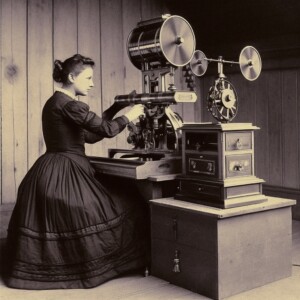The 19th century was a pivotal era that witnessed significant technological advancements that laid the foundation for the Industrial Revolution. This transformative period was characterized by groundbreaking inventions and innovations that revolutionized industries, transportation, communication, and daily life. In this article, we will explore some of the key technological breakthroughs of the 1800s and their profound impact on shaping the modern world.

- Steam Power and the Industrial Revolution: The widespread adoption of steam power became a hallmark of the 19th century and played a crucial role in driving the Industrial Revolution. Scottish engineer James Watt’s improvements to the steam engine, including the separate condenser, greatly increased its efficiency and practicality. Steam engines were employed in various industries, such as textile mills and transportation, revolutionizing production processes and enabling the efficient movement of goods and people.
- Telegraph and Communication Revolution: The invention of the telegraph by Samuel Morse and Alfred Vail in the 1830s revolutionized communication. This long-distance transmission device allowed for rapid communication over vast distances, using electrical signals and Morse code. The telegraph paved the way for efficient long-distance communication, transforming business, diplomacy, and news dissemination.
- Photography and Visual Documentation: The 19th century saw the birth of modern photography. The introduction of the daguerreotype process by Louis Daguerre and the calotype process by William Henry Fox Talbot enabled the capture and preservation of images. Photography provided a means to document the world with unprecedented accuracy, impacting fields such as journalism, art, and historical preservation.
- Railways and Transportation Revolution: The 1800s witnessed the rapid expansion of railway networks, transforming transportation and commerce. Pioneering engineers, including George Stephenson, developed steam locomotives that allowed for faster, more efficient, and reliable transportation of goods and passengers. Railways connected cities, facilitated trade, and spurred economic growth, reshaping society and opening up new opportunities for industrialization.
- Sewing Machine and Textile Industry: The invention of the sewing machine by Elias Howe and later improvements by Isaac Singer revolutionized the textile industry. The sewing machine automated the process of stitching fabric, greatly increasing productivity and transforming garment manufacturing. This invention led to the mass production of clothing and contributed to the growth of the ready-to-wear industry.
- Steel Production and Engineering Advancements: The 19th century witnessed significant advancements in steel production techniques, particularly the Bessemer process invented by Henry Bessemer. This method allowed for the mass production of steel, a stronger and more versatile material compared to iron. The availability of steel revolutionized construction, engineering, and manufacturing, enabling the construction of railways, bridges, and skyscrapers.
The technological breakthroughs of the 19th century paved the way for the Industrial Revolution, transforming society, industry, and communication. From the introduction of steam power and the birth of railways to the telegraph, photography, and advancements in manufacturing techniques, these innovations laid the foundation for the modern world. The impact of these advancements continues to be felt in various aspects of our lives today, shaping our industries, infrastructure, and interconnectedness. Reflecting on the technological progress of the 1800s allows us to appreciate the ingenuity and vision of inventors and engineers who set the stage for the remarkable transformations of the modern era.
As an Amazon Associate we earn from qualifying purchases through some links in our articles.
